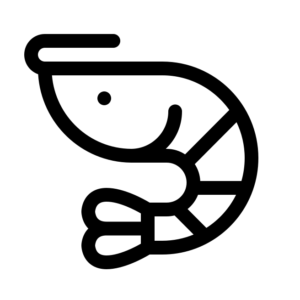Why do we need to differentiate
Selective breeding
One of the most critical aspect in learning how to differentiate male and female shrimp is one of the key to successful selective breeding. This post is really for the avid breeders who want to ensure and breed a line of beautiful shrimps.
When we are able to select male and female at a very young age, we will be able to control the selective breeding process which is important. Reason for that is because if a sneaker male who isn’t very nice breeds with all the female, the next generation of shrimplet will not be your ideal direction. Test your breeder the next time you get shrimps from them.
I get this question quite a bit and i would like to take this opportunity to share with you what i was taught in Taiwan on how to differentiate male and female shrimps.

The Taiwan way
There are basically a few ways to tell between a male and female shrimp when they are of certain size, however at 0.8cm onwards we know some of the male start to fly and mate. Hence it is important to either remove the shrimplet to their grow up tank or get the males out. However, to avoid any possibilities of shrimplet mating with the parents unintentionally, we will remove the shrimplet to another tank.
There when the shrimplet grows up, it will then be again split between male and female.
Differentiating Male and Female:
- Antennae
- Saddle
- Rounded bottom (female)
Antennae
This is the most accurate at 0.8cm onwards to identify between a male and female. I rank this as the top most reliable source to differentiate between male and female. However, this requires a steep learning curve as it is not as straight forward. I learn that in Taiwan apprenticeship to learning shrimp is to get the gender right. They do this day in and out to learn and differentiate and over years of learning they become master of it. I am very impress so far by how the Taiwanese have identify the male and female shrimp even at 0.8cm.
It is very difficult for this to be shown on a picture but the long and short of this “With the same body length, the male have longer antenna while female shorter”

This is by far the most use in Taiwan breeders to differentiate shrimplet between male and female. There are however still risk of Miss ID.
- Males go into fight and the antennae breaks off making them look like female
- Stunted growth making the shrimp look smaller than actual
Saddle and Curve Belly
This usually happens when the female shrimp is already of a certain breeding size where the saddle can be seen and Curve belly.
Trying to see saddle in Caridina can be quite challenging however given time you will be able to peek into the gap between the body and head.

The curve belly as one can see is a tell tale sign that it is a female, however if we reach this size to ID male and female, it is way too late from a selection process perspective, it has to be done way before that. This small yet crucial step can make or break the next generation of shrimplet.
This is also one of the reasons why all the shrimplets are house in a grow up tank to avoid unintentional breeding happening.
Other factors:
Such as curve 2nd carapace cannot be use as an ID of male and female because some males of high quality do have similar size carapace as female.
size is also not use when ID-ing the gender.
Pictures are not good at determining size of shrimp and hence do not send pictures of shrimplets and asking if they are male or female. Keep in mind that the antennae is in relation to body size. Hence, it is important that instead of providing the fish to you, teaching you how to fish is important.
So now what after sexing them?
Identification of male and female is the fundamental basis for shrimp breeding and it can be daunting at first, however over time and lots of shrimp practice you will soon graduate from the school of shrimp academy.
With the ability to differentiate male and female you will now be able to start splitting the males out from the grow out tank as we would usually only use a few males of good quality during selective breeding.
While sexing male and female is important, it is part of the entire process of breeding good shrimps including cycling of tanks and setting them up for success.
I’m sure you have benefitted from this post and a special shoutout to those who have requested for this article.
Cheers! and Peace out.




